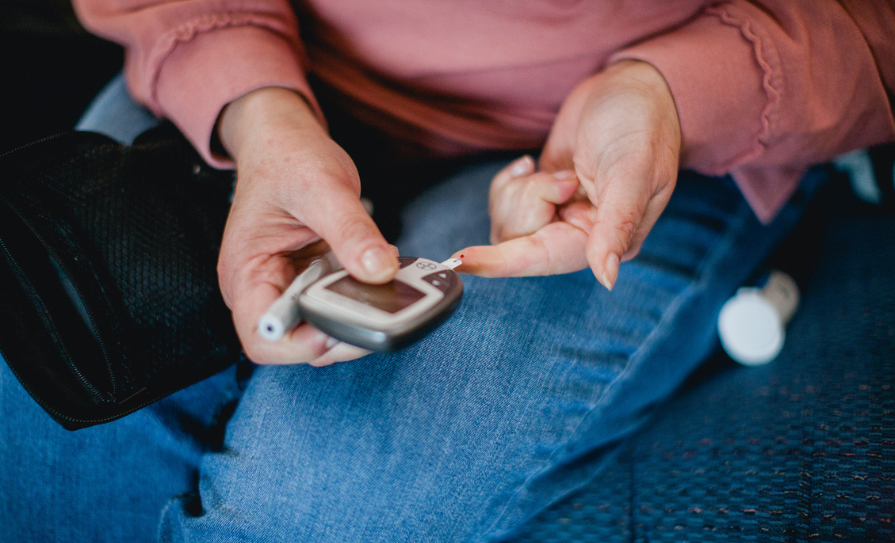Reference: March-April 2024 | Issue 2 | Vol 17 | Page 43
Myasthenia gravis (MG) is an autoimmune neuromuscular disorder characterised by muscle weakness and fatigue, often exacerbated by repetitive movements. The condition results from the body’s immune system mistakenly attacking specific proteins like acetylcholine receptors or muscle-specific tyrosine kinase at the neuromuscular junction (NMJ), impairing communication between nerves and muscles. It can lead to myasthenic crisis, which is a medical emergency.1,2
Most patients with MG have autoantibodies that target acetylcholine receptors (AChRs). Other less frequently found autoantibodies are directed towards muscle-specific kinase (MuSK), low-density lipoprotein receptor-related protein 4 (Lrp4), and agrin. These autoantibodies interfere with the communication between nerve endings and muscle fibres by inducing downregulation, destruction, functional obstruction of AChRs, or by disturbing the arrangement of AChRs in the postsynaptic membrane. Although MG is mediated by autoantibodies, different subtypes of T-cells and their cytokines also play important roles in the pathogenesis.1,3,4
MG is relatively rare, with an incidence ranging from 4.1-to-30 cases per million person-years, and a prevalence rate spanning 150-to-200 cases per million. While it can manifest at any age, it predominantly affects women younger than 40 and men over 60 years of age. Comorbidity is frequent, particularly in older patients. About 13 per cent of patients with MG have a comorbid autoimmune disorder.1,2
While there is no cure, MG is a treatable disorder. It can result in significant morbidity and mortality. This can usually be prevented with a timely diagnosis and appropriate treatment of the disease. MG, like other autoimmune disorders, occurs in genetically susceptible individuals. Precipitating factors include conditions like infections, immunisation, surgeries, and drugs – commonly aminoglycosides, fluoroquinolones, beta-blockers, neuromuscular blocking agents – and worsening chronic medical illnesses. MG can cause a significant number of complications. These include myasthenic crisis, an acute respiratory paralysis that requires intensive care, as well as adverse events due to long-term medication treatment like opportunistic infections and lymphoproliferative malignancies.2
Clinical presentation
Certain skeletal muscle groups are more likely to be involved than others, but the pattern varies widely among patients and depends on the clinical course in the individual patient. The hallmark symptom of MG is muscle weakness which worsens with activity and improves with rest. Common manifestations include ptosis, diplopia, dysphagia, slurred speech, and weakness in the limbs. The spectrum of symptoms ranges from a purely ocular form to severe weakness of the limb, bulbar, and respiratory muscles. Patients with MG usually have no sensory or pain symptoms, bowel or bladder dysfunction, or changes in mental status or cognition. Deep tendon reflexes are usually intact, even if the patient has marked weakness.1,5 Depending on the type of clinical features and the type of antibodies involved, MG can be classified into various subgroups:2
- Early-onset MG: Age at onset less than 50 years with thymic hyperplasia;
- Late-onset MG: Age at onset greater than 50 years with thymic atrophy;
- Thymoma-associated MG;
- MG with anti-MuSK antibodies;
- Ocular MG: Symptoms only from periocular muscles;
- MG with no detectable AChR and MuSK antibodies.
Diagnosis and investigations
Diagnosing MG involves a combination of clinical history, physical examination, and specific tests. The presence of characteristic symptoms, along with positive results from tests like the AChR antibody test, MuSK antibody test, and electromyography (EMG), helps in confirming the diagnosis.2,5
History taking should inquire about the timing of symptoms, what time of day the symptoms usually occur, as well as any improvement with rest. Subtle signs like coughing after swallowing, increased time to finish eating, hoarseness of the voice, easy fatiguability in walking or climbing stairs, and slow and frequent errors should be considered.2
Physical examination may reveal normal muscle power because of the fluctuating disease pattern. In such cases, repeated or sustained muscle contractions can demonstrate weakness. Improvement is seen after a period of rest or application of ice to the muscle group involved. The pupils, deep tendon reflexes, and sensory examinations are usually normal.2
Serological tests play an important role in diagnosis. The anti-AChR antibody test is highly specific, and confirms MG in patients with classical clinical symptoms. It is detected in around 80 per cent of generalised MG cases and only about 50 per cent of pure ocular MG cases. Approximately 5-to-10 per cent of patients display anti-MuSK antibodies. Only in a few sporadic cases, are both anti-AChR and anti-MuSK antibodies present in the same patient. The 3-to-50 per cent of the remaining patients who are seronegative to either of these antibodies demonstrate anti-low-density lipoprotein receptor-related protein 4 (LRP4) antibodies. Anti-striated muscle antibodies are present in 30 per cent of MG patients. They are more useful as a serologic marker for thymoma, especially in younger patients.2
Electrophysiologic tests are relevant in patients who are seronegative for antibody testing. Common tests for MG are the repetitive nerve stimulation (RNS) test and single-fibre EMG (SFEMG).2
The RNS test involves the induction of nerve stimulation at a frequency of 2-to-3Hz. Repetitive stimulation leads to the depletion of acetylcholine (ACh) at the NMJ, resulting in a diminished excitatory postsynaptic potential (EPSP). A reduction of 10 per cent or more in EPSP amplitude between the initial and fifth stimuli serves as a diagnostic indicator for myasthenia gravis.2
SFEMG, involves the recording of action potentials (AP) from individual muscle fibres. This technique enables simultaneous AP recording from two distinct muscle fibres innervated by a single motor neuron. Temporal disparity between the onsets of these action potentials, referred to as ‘jitter’, amplifies in myasthenia gravis due to compromised NMJ transmission. Acknowledged for its heightened sensitivity, SFEMG stands as one of the most effective diagnostic tools for myasthenia gravis.2,5
Edrophonium test employs a short-acting inhibitor called edrophonium to enhance the levels of ACh at the neuromuscular junction. It proves particularly beneficial for assessing ocular MG cases where other electrodiagnostic tests are not feasible. Administered intravenously, it aims to observe improvements in symptoms like ptosis or diplopia. Its sensitivity ranges between 71-to-95 per cent in diagnosing MG.1,2
When the edrophonium test cannot be used, the ice-pack test acts as an alternative. This involves placing an ice-pack over the eye for two-to-five minutes to assess any improvement in ptosis. However, it is not suitable for evaluating all affected muscles.1,2
Patients diagnosed with MG typically undergo chest CT or MRI to screen for thymoma. In instances of pure ocular MG, MRI of the orbits and brain are necessary to detect any localised mass lesions.1,2
Given the frequent coexistence of MG with other autoimmune disorders, tests for anti-nuclear (ANA) antibodies, rheumatoid factor, and baseline thyroid function is recommended.1,2
Treatment and management
Treatment and management strategies for myasthenia gravis aim to alleviate symptoms, improve muscle strength, and minimise complications. Effective management involves a multidisciplinary approach, aiming not only to alleviate symptoms, but also to enhance patient wellbeing and functional capacity.
Medications
Acetylcholinesterase inhibitors like pyridostigmine enhance neuromuscular transmission. Immunosuppressive drugs, such as corticosteroids, azathioprine, mycophenolate mofetil, or rituximab are used to modulate the immune response.
Acetylcholinesterase inhibitors work by stopping the breakdown of ACh at the NMJ, raising its levels. Pyridostigmine bromide is preferred over neostigmine due to its longer-lasting effects. For individuals intolerant to bromide, ambenonium chloride acts as an alternative. However, patients with MuSK MG often do not respond well to these medications and may need higher doses.3
Immunosuppressive therapies are recommended for patients who continue to experience symptoms despite treatment with pyridostigmine. First-line treatments like glucocorticoids, such as prednisone and methylprednisolone, along with azathioprine, are commonly used to manage MG. If these initial options are not effective or cannot be tolerated, second-line agents like cyclosporine, methotrexate, mycophenolate, cyclophosphamide, and tacrolimus may be considered. Monoclonal antibodies like rituximab and eculizumab have been explored for treating MG that does not respond to conventional drugs, but their efficacy in clinical trials is still awaiting documented data.2,3
Thymectomy
Surgical removal of the thymus gland is recommended in certain cases, especially in younger patients or those with thymoma. It is not recommended for the non-thymomatous MuSK MG, as thymic pathology is rare, and non-thymomatous ocular MG without secondary generalisation. In approximately 10 per cent of patients, MG is a paraneoplastic manifestation of an underlying thymic neoplasm.2,3
Other therapies
Plasma exchange or intravenous immunoglobulin are used for severe exacerbations to rapidly remove circulating antibodies or provide temporary immune modulation.2,3 Emerging treatments like eculizumab and other targeted immunotherapies are showing promise in refractory cases.2,7
When MG is diagnosed, patients should be educated about its typical course and prognosis. Points to discuss with patients include specific symptoms of the disease, including red flags; the importance of the progressive trend of symptom severity and frequency, rather than their transient worsening; common triggers of exacerbation, such as heat, infection, surgery, pregnancy, emotional disturbance, and certain medications; and the intended medication regimen and potential side-effects to ensure compliance.6,7 Because some medications can trigger or worsen myasthenic symptoms, all patients with MG, especially those with significant weakness, should be observed for increased weakness whenever a new medication is started. Drugs that are most clearly contraindicated in MG include telithromycin, intravenous magnesium, botulinum toxin, penicillamine, and immune checkpoint inhibitors. Other medications that can worsen the disease include fluoroquinolones, macrolide antibiotics, aminoglycoside, beta-blockers, chloroquine, statins, and iodinated contrast.7
Prognosis and outlook
The prognosis for MG patients varies widely. Some individuals experience mild symptoms while others experience more severe effects. With proper management, many people with MG can lead full lives. However, complications such as myasthenic crisis or medication side-effects, can occur and require prompt intervention. Key measures in preventing myasthenic crisis are consistent disease control, including adherence to the medication regimen and careful weaning from immunosuppressants, and avoiding triggers or precipitants. Uncontrolled MG can lead to substantial disability and recurrent hospital admissions, with an estimated mortality rate of about 2 per cent. Most patients with MG, however, have a near-normal lifespan with the current treatment modalities.2,5,6,7
MG is a challenging condition. While treatments like acetylcholinesterase inhibitors and immunosuppressive therapies play important roles in managing symptoms, the variable response among individuals highlights the complexity of this autoimmune disorder. Despite these treatments, 8.5-to-15 per cent of individuals with MG continue to have symptoms that negatively affect their quality-of-life, or have unwanted adverse effects related to the treatments.
Treatment for MG, however, is rapidly evolving, and ongoing research into novel therapies, including monoclonal antibodies, offers promising avenues for improved outcomes and better quality-of-life for those affected. As well as the introduction of immunological targeted therapies, other treatments are being examined, such as the transplantation of autologous hematopoietic stem cells for patients that do not respond to conventional treatment. Personalised treatments, identifying all relevant genes and polymorphisms associated with MG, may prove to be a beneficial tool. Using modern bioinformatics tools and the available information could lead to the understanding of the genetic base of MG and of autoimmune disorders in general. Research that integrates both genetic and epigenetic aspects is needed to uncover potential epigenetic markers relevant to MG. These markers could hold clinical significance by aiding in the prediction and treatment of myasthenia gravis.6,7,8
References
1. Dresser L, Wlodarski R, Rezania K, Soliven B. Myasthenia gravis: Epidemiology, pathophysiology, and clinical manifestations. J Clin Med. 2021;10(11):2235.
2. Beloor Suresh A, Asuncion R. Myasthenia gravis. USA: StatPearls Publishing; 2023. Available at: www.ncbi.nlm.nih.gov/books/NBK559331/.
3. Melzer N, Ruck T, Fuhr P, et al. Clinical features, pathogenesis, and treatment of myasthenia gravis: A supplement to the Guidelines of the German Neurological Society. J Neurol. 2016;263(8):1473-1494.
4. Li L, Xiong WC, Mei L. Neuromuscular junction formation, ageing, and disorders. Annu Rev Physiol. 2018;80:159-188.
5. Wang L, Zhang Y, He M. Clinical predictors for the prognosis of myasthenia gravis. BMC Neurol. 2017;17(1):77.
6. DeHart-McCoyle M, Patel S, Du X. New and emerging treatments for myasthenia gravis. BMJ Med. 2023;2(1):e000241.
7. Morren J, Li Y. Myasthenia gravis: Frequently asked questions. Cleveland Clinic Journal of Medicine. 2023;90(2):103-113. Available at: www.ccjm.org/content/90/2/103.
8. Golfinopoulou R, Papakonstantinou E, Vlachakis D. Future perspectives in myasthenia gravis (Review). Int Jour of Epigenetics. 2023. Available at: www.spandidos-publications.com/10.3892/ije.2023.16.













Leave a Reply
You must be logged in to post a comment.